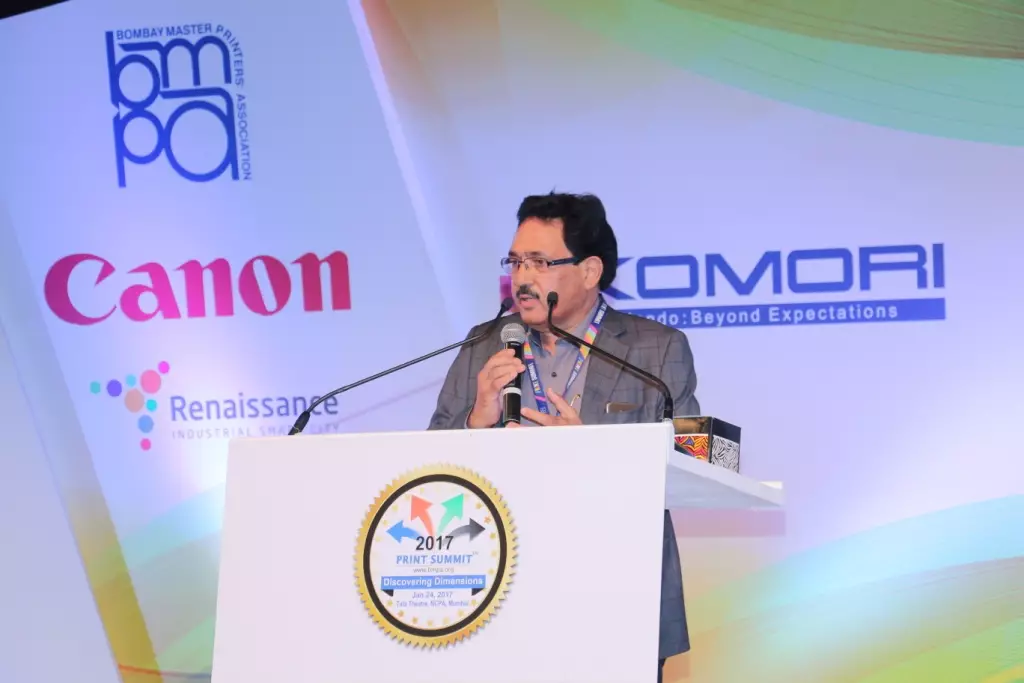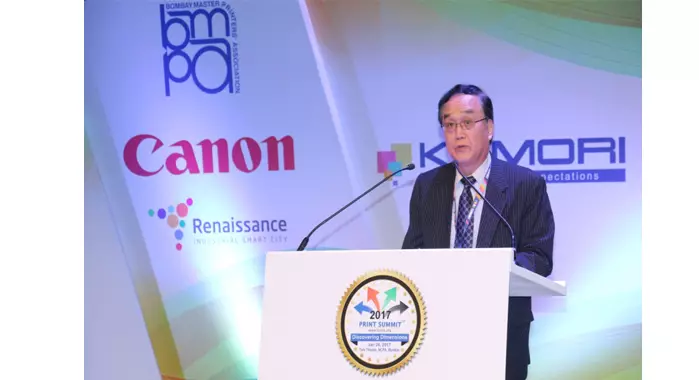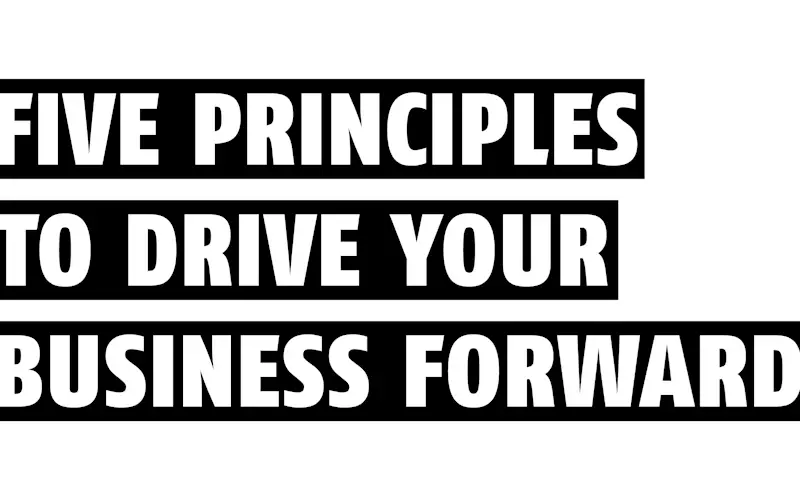Five principles to drive your business forward - The Noel D'Cunha Sunday Column
Akar, Printmann, Mudrika Labels, Vistaprint, Seshaasai, Prodon are some of the successful print businesses. Transformational leadership, investment strategies, pricing strategies, team building, and turning adversities into opportunities are some of the key factors that have driven their businesses.
In this Sunday Column, we share five winning principles for everyone to adopt.
28 Jan 2017 | By Noel D'Cunha
"There is only one boss; the customer. And he can fire everybody in the company from the chairman down, simply by spending money somewhere else.” These are the words of Sam Walton, the ex-chairman of Walmart.
According to an Economist Intelligence Report, understanding the dynamics of change — especially the elements of success and failure — is essential for companies operating in today’s constantly evolving business environment. In fact, change management is becoming a part of day-to-day management. Real competitive advantage comes from the ability to negotiate the process of change — something few firms are able to do — rather than address any one specific problem.
Here are some insights that will help understand the elements of successful change initiatives.
Price cutting
“Priceitis”, another name for price cutting, is a disease caught by 80% of the businesses, which make them vulnerable and less immune to business success. These businesses believe that being cheapest is the way to sell; that customers buy the price not the product.
Akar is a Mumbai-based print publishing and packaging company, which was studied in one of the Print Summit 2017 sessions. The Rs 90-crore company’s focus is medical content management and publishing, data assimilation and software development. “Accept price rejection,” says Ashok Jain of Akar. "Our company prides itself in the fact that we secure only two out of every 10 orders we quote for, thereby we stick to price."

According to a study, only 18-20% of buyers buy the cheapest product or service. For example, if being cheap was the only criteria, Nano would be a runaway success. And people would buy pyjama cords or string and not belt from preventing pants from falling.
When you drop your price you lose respect. “Never lose respect, printers have this huge respect deficit – we must work towards reducing that and reach a point when we are seen as partners and not just vendors,” says Tejas Tanna of Printmann, the company with a turnover of Rs 80-crore and super specialisation in the pharma segment.

One of the fundamental principles of doing good business is – people buy value and not price.
Press management
One of the startling revelation, Satoshi Mochida president and COO of Komori Corporation Japan made during his presentation at the Print Summit 2017, was that the presses on the Indian shopfloor are actually running at one-third of the total working hours.
A breakdown of average time in one job – not in operation 34% of time, operating time (production) 33%; and makeready time (changeover+test print) 33%.
Mochida presented Cimpress Group’s case-study. Cimpress is a Nasdaq listed Netherland-based, world’s largest W2P company, with a turnover of around USD 1.8bn and gross profit reached as high as 60%. It is equipped with 10 sets of Komori GL840P+HUV, 4+4 convertible perfecting press with HUV dryers, among other offset and digital presses.

One will think that this company has succeeded by taking advantage of the emerging W2P market or through M&A. No, their real advantage has come from converting printing into a manufacturing process. Cimpress has also developed a workflow to optimise the productivity of offset and digital presses.
“I believe that innovation can happen anywhere and so also in India,” says Mochida.
The challenge for the printing company is to finding solutions to the three major factors that are impeding production – machine condition related to maintenance and material; colour matching; and machine operation and operating procedures.
According to a press analysis, machine condition lowered productivity by 52%; colour matching by 31% and operation procedure by 15%.
The answer according to experts lie in standardisation – one, implementating a programme to standardise the machine condition; second, use material and consumables that are standardised to machine operating condition; and third, standardise the colour matching system.
Lowest cost of ownership, highest productivity and the best return-on-investment are somethings that one should strive to achieve.
Waste management
The problem with waste is that you can't bury it or burn it, even recycle it to an extent. Getting rid of wastage is getting harder, and the best way to manage waste is to reduce it.
Again, experts say, standardisation comes into play.
In packaging, you don’t have standardised paper format, but in various grammages and multiple sizes. “So you must opt for a special size,” says Ramesh Kejriwal, chairman of Parksons Packaging. “Some converters save time by requesting the mill to or the paperboard supplier to despatch the paperboard in the cut size on a pallet. This ensures saving time and cutting down waste.”
Operation rate is an important factor for cost calculation. Mochida says, “Today, the Internet of Things has enabled real-time production analysis and high-level improvement by visualising machine data.” And it’s not just in Komori presses but in a host of other press manufacturers as also manufacturers of digital, post-press and finishing equipment.
Kiran Prayagi, a print expert, says, every time I travel around the country, I’ve come across print firms that feel standardisation is something only for the big boys or it is expensive. “In fact, today a printer not implementing standardisation must be a rich fellow as he wastes a lot of paper and ink and other materials in getting the job right or redoing the job. Many of the technical plant audits that I have conducted reveal mind-boggling wastage figures.”
Prayagi cites examples of The Hindu, who as one of the early movers to adopt new technology to reduce newsprint wastage, brought in-house standardisation which permitted print densities that resulted in 25 percent larger colour gamut on a standard newsprint.
Temple Packaging in Mumbai customised technical standardisation operations with regular checks on production parameters and input material checks, excellent documentation, well-planned project implementation; especially for pharma customers. Colour management includes printing operations as well as ink kitchen management. Digital proofreading implementation helps quick job turnaround and waste reduction.
As Narendra Paruchuri of Pragati puts it: Printing is no longer considered an art but science. Print production is based on numbers rather than a subjective judgment of an individual. This results in consistency and repeatability. “We stock less than what we used to stock a couple of years ago in spite of increased turnovers.”
The more you reduce waste the more you manage waste.
Investment strategy
Those printers who have brought in the right technology and have approached the market in an organised way have done better than others.
To quote a friend, who said, “I know a printer who has invested in a six-colour press with a coater, a die-cutter and a folder-gluer, thinking that it will make them a packaging printer, hasn’t been doing well.”
Can you blame the packaging industry for such unreasonable thinking? No, says Mehul Desai of MOS, who made a presentation on simplifying investment strategy at Print Summit. In the course of his 30-minute presentation, Desai examined three print firms: Prodon Enterprises, Seshaasai Business Forms, and Vistaprint – all different in size, equipment, the type of clients they service, the geographical markets and infrastructure. “All come into play when you make a strategy,” he says. “What your printer friend is doing should not be the basis of your investment decision,” Desai emphasised.

So what should you do when it comes to investment in a press or a post-press machine? Evaluate your equipment purchase properly – don’t just go for name and brand, it’s too big an investment. Aditya Surana of Indo Polygraphy Machinery, the Indian representative of KBA, says, "Today every manufacturer will give you a return on investment chart, which is a basic. When we talk about a packaging plant, we are talking about not less than Rs 30-cr minimum, which includes land, infrastructure, and machinery.”
Go and evaluate the equipment properly rather than sitting in the plant and taking a decision on just the pricing. Take a job, get it printed on a machine you have zeroed in one and then decide.
Making a wrong investment decision can be injurious to your print business.
Manpower development
The chief guest at Print Summit 2017, Shekhar Gupta, a renowned Indian journalist, says, one of the five leadership qualities is the ability to build a great team.

Companies that work as a team succeed, especially as the momentum picks up. While discussing the Printer Premier League, the cricket tournament hosted by BMPA last month, one print CEO told me, the group that fostered the best team spirit won the trophy. He connected his experience with manpower development and what the experts spoke at Print Summit, “Companies are like teams, and for teams to succeed, especially when the momentum picks up, every member of the team has to deliver.”
Fostering the team spirit is the mantra. “Give recognition to your people at the right time, allow people to air their grievances,” says Lt Gen (Retd) Syed Ata Hasnain, who set the tone for Print Summit 2017 in his keynote address.
Sharing his other mantra of direct leadership, Lt Gen Hasnain, says, speak to your people directly – “on a one on one basis”. “It promotes happiness and does it effectively.”
And finally, to be competitive, every print business will have to develop the skills and capabilities of its team.
For, after all, every print company’s revenue stream and future will depend on how productive its team is and convincing buyers that he is buying value and not price.














 See All
See All